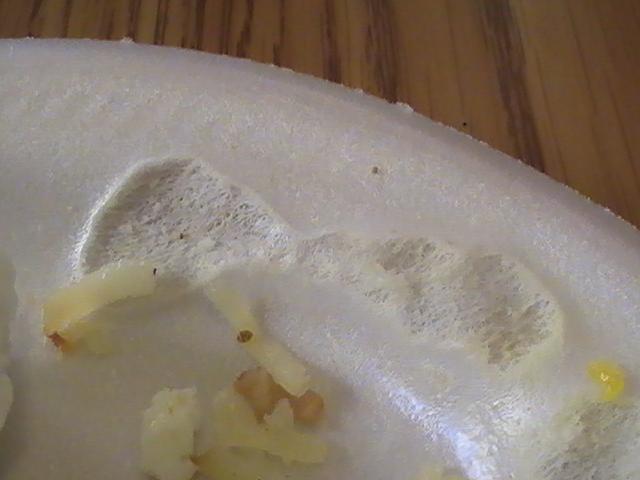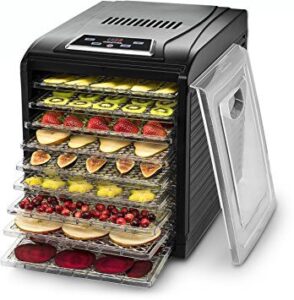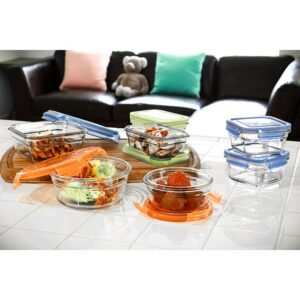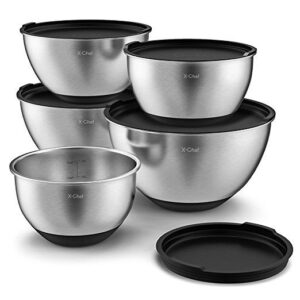Can You Microwave Styrofoam? Everything you need to know
Some, but not all, types of Styrofoam are suitable for microwave use. The best way of staying safe is to read all instructions printed on the packaging. If the container says it’s ideal for single use only, do not repeatedly microwave the plastic. Styrofoam products that the FDA has deemed safe through testing for food usually carry the “Microwave Safe” label.
 How can you tell if Styrofoam is microwave safe?
How can you tell if Styrofoam is microwave safe?
If your container doesn’t have a microwave-safe symbol, we don’t recommend putting it in the microwave. Not even for 20 seconds!
Everyday items made of styrofoam that are microwaved (that probably should not) include coffee cups, takeout containers, disposable plates, and cup noodles.
Things to Remember:
- Check if the styrofoam container is microwave safe.
- Microwave for a shorter amount of time
- Use another safe microwave container instead, if possible.
Different types Of Styrofoam Containers
- Styrofoam Plates — These are cheap alternatives good for celebrations since they’re cheap and disposable but are frequently used to reheat meals on the following day or people who’ve arrive late to the function.
- Take-out Containers — These are often used when ordering out or taking leftovers home in a big meal at a grocery store. Rather than eliminating the materials and reheating the leftovers in another dish, it is a lot easier to throw the entire thing at the microwave for 5 minutes.
- Coffee Cups — Frequently, Styrofoam coffee cups are utilized to serve coffee and hot chocolate.
- Traditional Cup Noodles — Generally, have two sets of directions. One adds boiling water, whereas the other may suggest filling with water from the tap and placing the entire thing in the microwave.
What is Styrofoam?
Styrofoam is a registered trademark of Dow Chemical, synonymous with all kinds of plastic foam material. The polystyrene foam used in several programs, from takeout containers to packing peanuts, is a petroleum-based substance generated from styrene and benzene. It has several features that contribute to its prevalence, for example:
The composition is roughly 95 percent air, which makes it amazingly light in weight.
Styrofoam is a great insulator having an R-value of approximately R-5 for each inch.
Because of the high content of the air, styrofoam is virtually unsinkable.
Styrofoam doesn’t break down or lose its shape over time.
Why is it bad to microwave styrofoam -Side Effects and Dangers
If you are asking if Styrofoam flammable? Here is your answer – Actual Polystyrene is extremely flammable, but chemical additives make it more immune to flame-based on the application.
Regrettably, Styrofoam containers are lean rather than made to be cooked with; therefore, they also pose a fire hazard. A few of the potential effects of ingesting the compound components of heated polystyrene may include Eye and gut soreness, HeadachesInfection hearing reduction, Clinical melancholy Dysfunction of the central nervous system.
Can you get cancer from microwaving styrofoam?
You may have come across articles saying that Styrene, a compound utilized in Polystyrene, has been connected with cancer. And to be clear, it has been listed as a potential carcinogen. Since microwaving Styrofoam risks are mostly unproven at this point, it is tough to state whether or not microwaving typical Styrofoam releases sufficient of those substances to cause injury to human health.
Benefits Of Microwaving Styrofoam
In contrast, microwaving Styrofoam may also supply a few benefits. Benefit-Cost-effectiveness, Disposability, Whether or not these benefits outweigh the risks is up to each individual.
Articles you may like
Best Digital Food Dehydrator for 2021
Can you stand in front of a microwave while cooking, and is it safe?
2021 Safe Microwave Alternative: Best Replacements for Microwave Ovens
Why are Paper Straws Better Than Plastic Ones?
Best Stainless Steel Mixing Bowls with Lids
Best Pyrex lids and Replacement Covers
Which Meal Prep Containers Best, Glass, or BPA Free Plastic?
Get Nordic ware microwave rice cooker instructions for help.
Glasslock Microwavable Glass Containers
Best Fat Separator and Gravy Separator
How to Cook Rice in the Microwave?
Is it safe to put styrofoam plates in the microwave?

It is anytime better to use glass containers or ceramics to heat food in a microwave rather than plastic containers or plastic covers. The plastic wraps that touch the food while it is heated in a microwave melt can add toxins to food. Styrofoam is a polystyrene foam product that mainly uses housing insulation and keeps the computers safe at the time of shipping.
How Can I Microwave Styrofoam?
The shape of the Styrofoam container may be changed in heating in a microwave, and it can destroy the meal once it melts. The toxic chemicals that are leached out are very harmful to the body. Particular Styrofoam containers are manufactured primarily for use in a microwave, heat-friendly, and used for heating food. The temperature at which the food is heated in these containers must not exceed 175 degrees for it to melt. It is better than plastic containers are not used and avoided for heating food rather than worrying about microwaving styrofoam, and it is safe to do so.
Can You Microwave Styrofoam Plates and Cups?
Styrofoam, also known by the generic title polystyrene, is a plastic made of expanded polystyrene beads. Urban legends abound on the prospective side-effects and health dangers connected with microwaving styrofoam plates and cups. Various studies have proven that microwaving a styrofoam plate (and other styrofoam goods ) may be ok.
Can you place Styrofoam in a warming drawer?
Styrofoam includes a melt temperature directly around 400 degrees F, and it can achieve those temperatures quickly if place into a heating oven. Styrofoam can be highly flammable; therefore, you should avoid placing styrofoam in the oven at all.
Can u microwave styrofoam?

Please think twice before throwing your leftovers straight into the microwave in the styrofoam container they came home in. You might be subjecting yourself to a dangerous situation or fire. Even if the styrofoam does not melt, you could be eating hazardous toxins emitted during the microwaving process.








